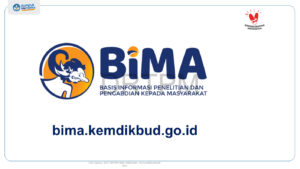Academics in around a dozen countries are excessively citing their own scholarly papers, according to an analysis of 24 years of data. The phenomenon of “country self-citation” is being observed in countries such as Colombia, Egypt, Indonesia, Iran, Italy, Malaysia, Pakistan, Romania, Russia, Saudi Arabia, Thailand, and Ukraine. This trend has been linked to various factors, including the implementation of controversial policies that require academics to meet productivity thresholds based on publication volume. The self-citation rates vary by country, with some countries showing significantly higher rates than others. For instance, the First Author self-citation rate in the United States is 4.73%, while in China, it is 2.41%. The impact of country self-citation on the ranking of the top 50 countries has also been studied, with findings suggesting that productive, well-cited countries have a higher self-citation rate, but it does not significantly influence their worldwide ranking. The trend of country self-citations has been investigated in 50 countries worldwide, with results showing that for most countries, country self-citations have decreased over time, but the 12 aforementioned countries exhibit unusually high self-citation rates.
High self-citation rates in academic research can have both positive and negative consequences. On the one hand, self-citation can be a legitimate way for researchers to acknowledge their own previous work and build on it. It can also increase the visibility of their work and help establish their expertise in a particular field. However, excessive self-citation can be seen as an attempt to manipulate citation rates and inflate the perceived significance of one’s work. This can lead to misrepresentation of research performance and undermine the credibility of the research. Moreover, high self-citation rates can negatively affect the accuracy of citation-based research evaluation schemes, such as the Journal Impact Factor, which can lead to biased rankings and funding decisions. Some researchers have suggested that self-citations should be removed from citation counts or penalized to address these issues.
Academic journals and publishers generally view high self-citation rates with caution due to the potential for both positive and negative implications. While self-citation can be a legitimate way to acknowledge previous work and increase the visibility of research, excessive self-citation can lead to misrepresentation of research performance and undermine the credibility of the work. Some studies have suggested that a relatively high self-citation rate, especially at the journal level, may be due to several factors such as the journal’s unique topic or editorial practices, and it should be considered at the individual journal level. Additionally, excessive self-citation can be seen as unprofessional and, in some cases, unethical, potentially leading to the manipulation of impact factors and citation cartels. However, it’s worth noting that there is no significant penalty for the most frequent self-citers, and the effect of self-citation remains positive even for very high rates of self-citation.
Academic journals and publishers measure self-citation rates by calculating the ratio of self-citations to total citations for authors and their papers. This measurement aims to track the rate at which authors cite their own articles and to understand the self-referencing behavior among individual authors. For journal-level analysis, the self-citation rate is determined as the number of journal self-citations expressed as a percentage of the total citations. A relatively high self-citation rate at the journal level can be due to several factors, such as the journal’s unique topic or highly specific focus. It’s important to note that there is no standard rate at which self-citation is expected to appear, and the impact of self-citation remains a topic of ongoing research and discussion.
What are some limitations of using self-citation rates to evaluate research quality
The limitations of using self-citation rates to evaluate research quality include:
- Influence of Policies and Research Background: Self-citation rates can be influenced by extraneous factors such as research policies and researchers’ backgrounds, making it challenging to draw direct conclusions about the quality of research based solely on self-citation rates.
- Lack of Standardization: There is no standard rate at which self-citation is expected to appear, and the impact of self-citation remains a topic of ongoing research and discussion, making it difficult to establish universal thresholds for what constitutes excessive self-citation.
- Inadequate Contextual Understanding: Using self-citation rate indicators to compare citation behavior at the individual level is open to misleading conclusions and grave risks, as there could be many legitimate explanatory factors for behaviors in which individual scientists self-cite.
- Incomplete Assessment: Self-citation rates may not provide a comprehensive assessment of research quality, as they do not account for other important measures such as the impact of the research on the field or its originality.
- Limited Scope of Study: Some studies have focused on a subset of countries or languages, potentially excluding important data from the analysis.
These limitations highlight the complexity of using self-citation rates as the sole metric for evaluating research quality and the need for a more comprehensive and nuanced approach to research evaluation.
Sources:
https://arxiv.org/pdf/2102.05358.pdf
https://link.springer.com/article/10.1007/s11192-020-03417-5
https://www.nature.com/articles/d41586-024-00090-z
https://www.sciencedirect.com/science/article/pii/S1751157721000924
https://www.sciencedirect.com/science/article/pii/S2405650221000253
https://www.researchgate.net/publication/349716027_SELF-CITATION_THE_RISKS_AND_BENEFITS
https://link.springer.com/article/10.1007/s11192-020-03413-9
https://clarivate.com/webofsciencegroup/essays/journal-self-citation-jcr/
https://blogs.scientificamerican.com/information-culture/on-self-citation/
https://www.southernfriedscience.com/the-dangers-of-excessive-self-citation/
https://elifesciences.org/reviewed-preprints/88540
https://www.ncbi.nlm.nih.gov/pmc/articles/PMC10756561/





